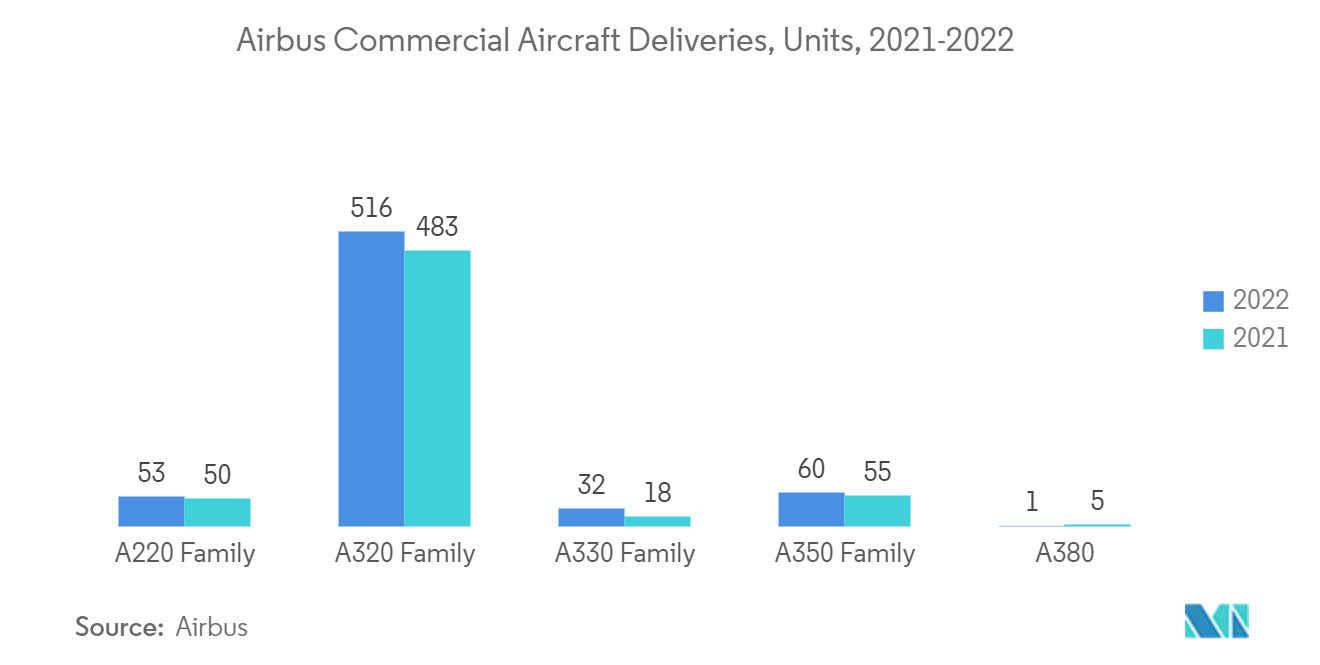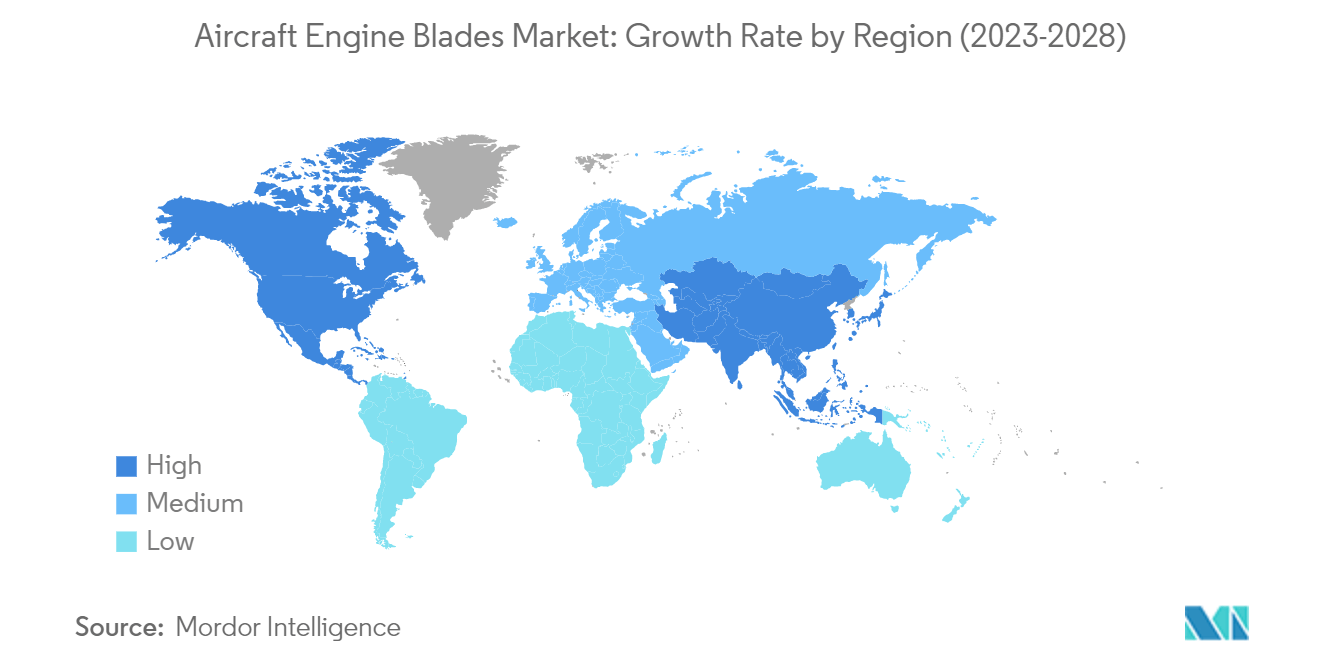Market Trends of Aircraft Engine Blades Industry
The Commercial Segment is Expected to Register the Highest CAGR during the Forecast Period
- In 2022, the commercial sector had a considerable proportion of the aircraft engine blades market. This was mostly due to increased worldwide airline purchases for newer aircraft to replace aging fleets and extend their service offering. The growing demand for commercial aircraft results from increased global air passenger traffic, which has driven carriers to purchase new-generation aircraft to assure profitability.
- As an aircraft model is designed to be integrated with limited engine options, this has resulted in a rise in orders for new gas turbine engines to integrate onboard the new aircraft due to be delivered to airline operators. According to the latest data from International Air Transport Association (IATA), air passenger traffic will reach 4 billion in 2024. Furthermore, as per the Commercial Market Outlook (CMO) 2022 released by the Boeing Company, the demand for new aircraft will exceed 41,000 units during 2022-2041.
- Engine manufacturers are facing a massive backlog of orders totaling more than USD 140 billion. As a result, engine original equipment manufacturers (OEMs) such as Rolls-Royce Holding PLC, Pratt & Whitney (Raytheon Technologies Corporation), Safran SA, and the General Electric Company are expanding existing facilities to increase output. New aircraft programs, such as the Boeing B777X and the Comac C919, are also projected to drive demand for aviation engine blades in this class. The GE9X engine powers the Boeing B777X. The General Electric Company manufactures the GE9X engine, and it features 3D-printed low-pressure turbine blades and sophisticated carbon-fiber composite fan blades.

Asia-Pacific is Expected to Generate the Highest Demand During the Forecast Period
- The number of people opting to air travel in Asia-Pacific is now on the rise compelling the airlines to undertake fleet expansion initiatives. As per the latest forecasts by the Boeing Company, Southeast Asia alone would generate a demand of 3,430 narrowbodies and 740 widebody aircraft by 2041. China and India are the two most important demand generators, with India alone projected to generate demand for over 2,200 new aircraft during the period.
- Asia Pacific was already a maintenance, repairs, and operations (MRO) hub, and the robust demand projections have encouraged aircraft engine original equipment manufacturers (OEMs) and supply chain players to expand and set up new facilities in the region to decrease supply chain complexity and tap into the increasing potential market. Furthermore, rising military expenditure is likely to boost military aircraft development and purchase. At the same time, the region's growing general aviation fleet is expected to drive the expansion of the aircraft engine blades market.


